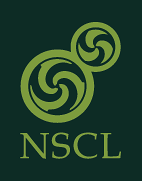A View in the Broken Nuclear Mirror
The proton and the neutron can be considered as two states of the same particle, referred to as the nucleon. For a pair of mirror nuclei, where the number of neutrons in one matches the number of protons in the other, one therefore may expect their properties to be essentially the same. This symmetry, referred to as isospin symmetry, is manifestly violated by electromagnetic force as the proton has a positive charge and the neutron is neutral. Since the electrostatic repulsion between protons is well understood, its effects on the outermost nucleons can be calculated precisely and so any other significant differences observed for mirror nuclei may be attributed to other elusive forces that violate isospin symmetry. In pursuit of characterizing such forces, a collaboration led by researchers from the University of York in the UK performed an experiment at NSCL/MSU that identified a large number of quantum states in the short-lived cobalt isotope 52Co (comprised of 27 protons and 25 neutrons) and compared them to its manganese mirror partner 52Mn (made up of 25 protons and 27 neutrons). The rare nuclear reaction used at the Cyclotron Laboratory populated quantum states in 52Co up to high angular momentum. The comparison with the mirror partner unraveled that the impact of angular momentum on the nuclear interaction has to be taken into account to explain the experimental observations.

Isospin symmetry at high spin studied via nucleon knockout from isomeric states, S. A. Milne, M. A. Bentley, E. C. Simpson, T. Baugher, D. Bazin, J. S. Berryman, A. M. Bruce, P. J. Davies, C. Aa. Diget, A. Gade, T. W. Henry, H. Iwasaki, A. Lemasson, S. M. Lenzi, S. McDaniel, D. R. Napoli, A. J. Nichols, A. Ratkiewicz, L. Scruton, S. R. Stroberg, J. A. Tostevin, D. Weisshaar, K. Wimmer, and R. Winkler, Physical Review Letters, 117, 082502 (2016)
View the full paper here:
http://journals.aps.org/prl/abstract/10.1103/PhysRevLett.117.082502



